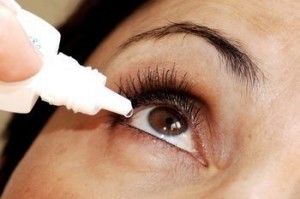A person suffering from a corneal ulcer will have a shallow depression in the clear region of the eyeball that covers the pupil and the iris. Corneal ulcers are usually caused due to corneal foreign objects, corneal abrasions, keratoconjunctivitis or ultraviolet keratits.
Disclaimer: the details posted on this blog are for information purposes only. To learn more about eye injuries enrol in St Mark James first aid training.
Anatomy of the eye
To understand how a corneal ulcer occurs, let’s try to familiar ourselves with the different parts of the human eye:
- Extraocular muscles and bony orbit. The bone surrounding the eye protects it from physical damage and the extraocular muscles allow movement of the eyeball within the socket.
- Conjunctiva. This is the outermost layer of the eye. This layer is a thin and clear membrane that covers the ‘white’ of the eye and the inside of the eyelids that is in direct contact with our eyes.
- Sclera. This is the rigid, white outer layer of the eyeball.
- Cornea. This is a clear membrane that protects the iris and the pupil.
- Pupil. The pupil allows light to pass through so that we can see.
- Iris. This is the colored region of the eye that controls light passing through the pupil
- Lens. This is a clear disc inside the eye that obtains light via the pupil in order to focus an image in the cornea.
- Ciliary body. These muscles play a role in controlling the lens’ shape.
- Vitreous humor. This is the clear gel inside the eye ball that helps in maintaining its shape.
- Retina. This acts like a film in a camera. The retina plays a role in sending images to the brain for the information to be processed to our minds.
Causes
- Uvetitis
- Corneal abrasion
- Corneal foreign body
- Ketaconjuncitivitis
- Ultraviolet keratitis
Signs and symptoms
- Severe pain in the eye
- Pain worsens when you blink
- Vision changes such as blurred vision
- Excessive tearing of the eye
- Increased sensitivity to bright light and sunlight
- A sensation of having a foreign body on the surface of the eye
- Cloudy cornea – a hazy patch on the surface of the eye
- A depression in the cornea
Treatment
Seek emergency medical assistance if:
- You experience loss of vision
- You experience any changes in vision
- You have just experience an eye injury and suffering from severe eye pain
Follow these treatment steps till help arrives
1. Protect the affected eye
- Take the contact lenses off, in case the casualty is wearing any
- Offer a pair of dark glasses or sunglasses as it may comfort the eye
- Do not try to repair the damage by flushing the eye, dabbing it, rubbing it, compressing it or patching it
2. Get help as soon as possible
- Visit a doctor if you suffer from persistent eye pain, redness of the eye, changes in vision, rashes around the eye, drainage from the eye such as pus, fever or swelling of the eyelids
A doctor who specializes in treating damages to the eye is called an ophthalmologist.
Learn More
To learn more about eye injuries and other first aid issues take a first aid class through a credible provider (sign up here).

